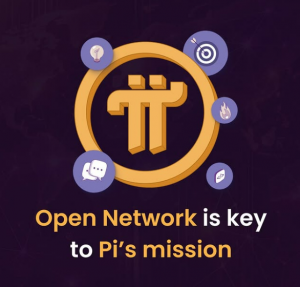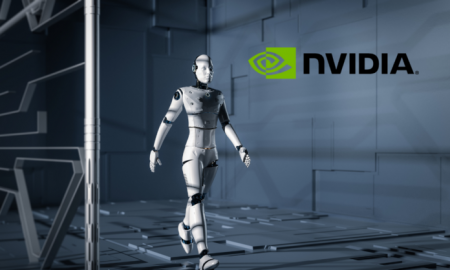AI initiatives will be successful in the long term only if they are led by human expertise.
There is a giant leap from the pre-AI era of manual operations to the post-AI era of automation and innovation. Artificial intelligence is seeing widespread integration into every aspect of business operations. Some of the most trending aspects of AI are Generative AI, Natural Language Processing (NLP), Data Science, and Machine Learning. These models simplify complex tasks and help businesses lay a rock-solid foundation in strategic development.
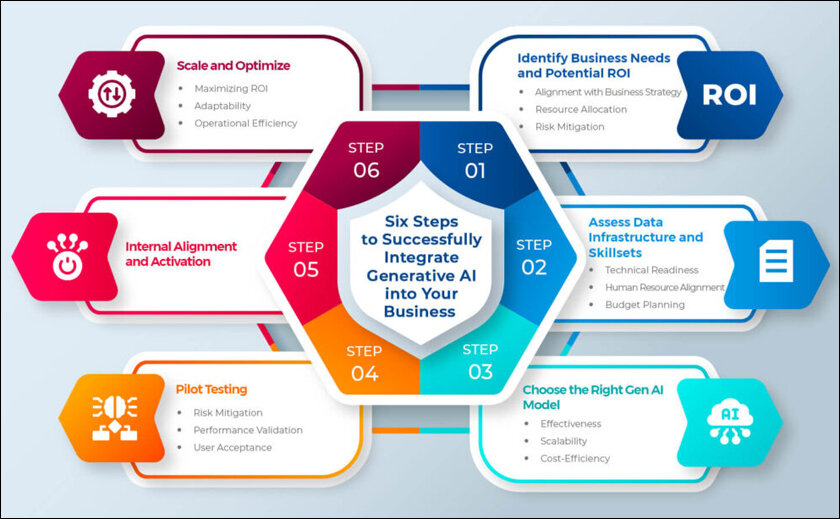
The Six Stages of AI Development
It’s fascinating to know that AI has six stages of development, but only the first three levels of the six can be leveraged by businesses today. These are:
- Simple analytical intelligence where AI systems collect and analyze data to generate a response
- Diagnostic intelligence to understand root causes and drivers of performance
- Predictive intelligence to foretell future scenarios based on historical data
- Advising actions based on analysis
- Decision-making authority with constraints and supervision
- Autonomous AI with zero human intervention
Now, with the first three levels unlocked (with diagnostic and predictive intelligence still in development), businesses can equip themselves with strategies to optimize growth.
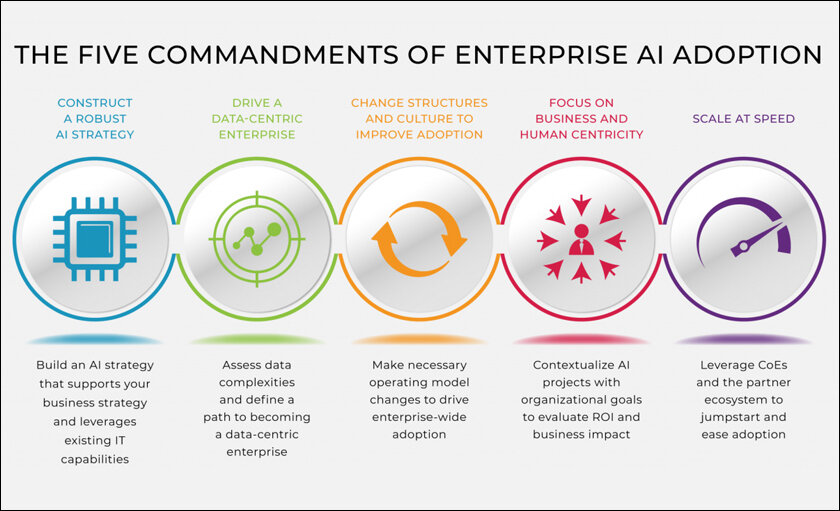
Strategies to Boost Your Business Growth with AI
1. Identifying Business Objectives and Goals with AI
Business executives need to understand the strategic importance of AI. How AI can bring:
- Efficacy in business operations
- Open up new market possibilities
- Create unique customer experiences
- Catalyze business growth
Despite the limitations and associated ethical considerations, integrating AI into a business growth strategy is more than a technical upgrade. It’s a means to remain relevant and competitive in an AI-dominant world.
2. Assessing AI Readiness
To ensure that your business is ready to adopt the necessary AI applications, it becomes crucial to check the following:
- A strategic plan for AI adoption
- Ensuring that your technical infrastructure is up to date
- Ensuring the quality and accessibility of your data
- Analyzing and improving operational efficiency
- Ensuring that your organizational culture adapts and supports AI innovation
3. Choosing the Right AI Tools
After setting the business goals comes the time to explore AI tools and applications and choose the one that best aligns with the business objectives/goals, data requirements, and functionality across operations.
Follow these steps to choose the right tool:
- Identify your business goals
- Research available AI tools
- Evaluate the tool’s abilities and efficiency
- Understand data requirements
- Assess privacy and security
- Evaluate the cost and ROI of the tool
- Check for the reputation and reliability of the AI tool
- Check if the AI tool can be customized to your business needs
4. Investing in the Right Talent
With AI’s evolution, the associated skills will keep evolving. Keeping this in mind, you would always be on the run to upskill and reskill your existing talent pool. While technical skills like data science and machine learning will remain crucial, professionals must balance hard and soft skills.
While reskilling and hiring for new talent, prioritize the following:
- A perfect blend of hard and soft skills
- Invest in continuous learning and development
- Foster a culture of experimentation and innovation
- Attract and retain top talent
- Ethical considerations in AI
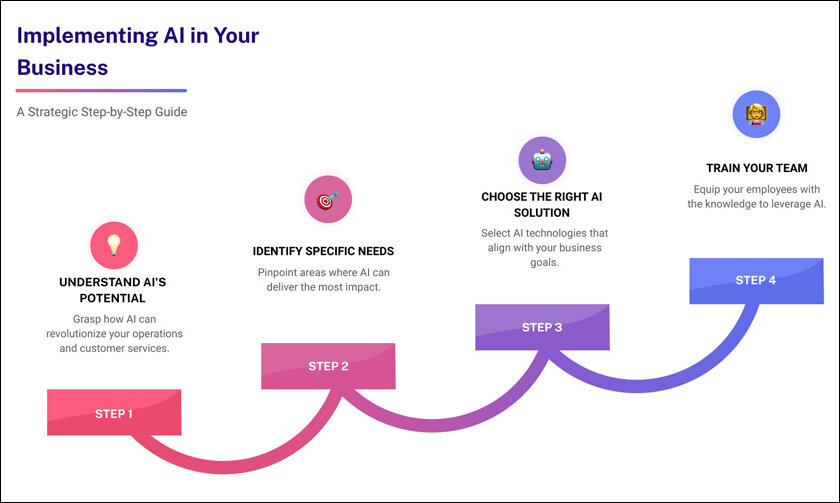
Best Practices for AI Implementation
AI is a two-edged sword; its benefits are immense, but it requires measured caution. Consider the following best practices to prevent risks associated with AI deployment.
Ethical Considerations
- Ensuring that data used to train the AI models is diverse and bias-free
- Making AI decision-making transparent and explainable to users
- Establishing clear roles and responsibilities for AI development, deployment, and oversight
- Ensuring privacy and data protection while collecting and using user’s information
- Addressing issues like job displacement and economic impacts resulting from AI integration
Continuous Learning
- Keeping all your AI systems updated with the latest advancements
- Incorporating user feedback to improve AI performance
- Retraining AI models with new data to maintain accuracy
Data Quality and Governance
- Ensuring data fed to the AI tools is accurate, complete, and consistent
- Ensuring data quality and governance to protect data from unauthorized access and breaches
- Protecting data from unauthorized access and breaches
Monitoring and Evaluation
- Tracking key performance indicators to measure AI effectiveness and identify areas of improvement
- Evaluating AI systems for bias, fairness, and accuracy
- Using evaluation results to identify areas of improvement
Embracing AI: The Two-Edged Sword
Integrating AI into your business operation can help you save time, reduce costs, and provide scope for human-led creativity. And one thing will always remain constant: AI initiatives will be successful in the long term only if they are led by human expertise.
The roadmap to business growth is incomplete without AI. Are you ready to embrace it?
In case you missed:
- Essential Skills You Need to Thrive in an AI-Driven Workplace
- Demystifying AI for Small Businesses: Practical Applications
- Balancing the Scales: AI Evolution vs Ethics
- Incident Response and Disaster Recovery: Preparing for the Worst-Case Scenario
- Securing the Digital Transformation Journey: Cybersecurity Pitfalls to Avoid
- Understanding Data Residency
- How to Secure Your DevOps Pipelines?
- Data Classification and Risk Assessment: Foundations for Effective Data Protection
- Compliance and Data Protection: Navigating Complex Regulatory Landscapes
- AI-Powered Cybersecurity: How Machine Learning is Revolutionizing Threat Detection
